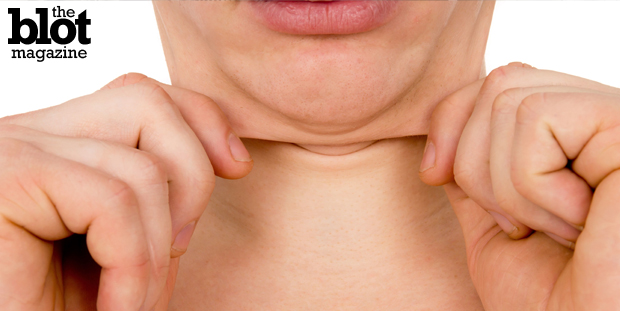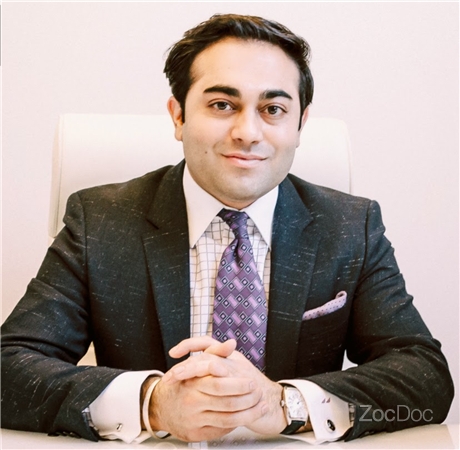
Dr. SACHIN SHRIDHARANI is the No. 1 ranked cosmetic surgeon in New York City. Dr. Shridharani is the only authorized comestic surgeon in New York City to perform the legendary Kybella procedure. This exclusive piece for TheBlot Magazine has received overwhelming reader response. Enjoy! – Editor’s Note.
Dr. SACHIN SHRIDHARANI, Chief Surgeon, Luxurgery New York: It was not that long ago that the only way to get rid of prominent forehead lines or glabella, the area between the eyebrows, worry lines, aka 11s, was with a major surgery called a brow lift. Getting rid of crow’s feet, the fine lines seen in a starburst pattern between the eyes and side burns, required surgically cutting muscles around the eye. Then, Botox came along, and the world was never the same.
Kybella is the future
Though used for years prior for other reasons, in 2002, the well-known wrinkle-eraser received its Food and Drug Administration indication for cosmetic purposes.
Fast forward more than a decade, and the only way to get rid of fat under the chin that causes the double-chin look has been with either liposuction or direct lipectomy (cutting out the fat during a neck lift, for example) — until now. A few weeks ago, the United States FDA gave its full approval to Kythera Biopharmaceuticals’ permanent fat-dissolving injectable. Called Kybella, it is the world’s first injectable of its kind that is composed of non-human, non-animal derived version of deoxycholic acid, which is a naturally occurring material found in all of us that helps breakdown fat and absorb it.
And the world may never be the same … again. For more than a century, surgeons have been looking for ways to safely remove fat. Thus far, the technology has been refined and come a long way from the first reports dating back to 1921 of sharply cutting out fat from a ballerina’s calves through a small incision. Unfortunately, this resulted in an injury to the femoral artery leading to the ballerina requiring leg amputation. In the 1980s, we saw the birth of modern-day liposuction, which at its most rudimentary explanation is a slim cannula (think a thin metal straw without a hole at the end, but with one or two holes on the side close to the tip instead) hooked up to a suction-generating apparatus, which is carefully inserted in small access incisions to surgically remove fat. Here is an example of someone having liposuction while awake with local anesthesia:
Surgeons and scientists alike are always on a quest to find minimally invasive alternatives to surgery for aesthetic/cosmetic concerns. Depending on the source of the statistics, liposuction ranks as first- and third-most common cosmetic surgery procedures performed in the United States. Amongst men, surgical fat removal is the most-common procedure we males seek. It is only fitting that the quest for a minimally invasive and non-surgical ways of permanently getting rid of fat has been pursued. Having interacted with thousands of patients over nearly the past decade, I have spent countless hours with patients who have wanted to have some cosmetic issue addressed. The tug-of-war between what a patient wants and the validation he/she seeks from a parent, friend, spouse or partner who feels he/she “doesn’t need anything” is an interesting dynamic to watch unfold. I have seen couples battle over the size of breast implants and mothers with their daughters discuss the “perfect nose.” I have witnessed husbands tell wives they “love the character lines” on their forehead and to not get Botox.
No one — and I mean no one — has ever resisted his or her partner/friend wanting to get rid of his/her double chin.
It is difficult to predict whether or not Kybella will be the next Botox. What we do know is that obesity has been and continues to be at an all-time high in the United States. Cosmetic surgery and procedures are more prevalent and widely accepted than ever before. And, there is an FDA-approved injection (not a treatment for obesity) that can be performed on a lunch break to help permanently dissolve fat under the chin and improve the appearance of one’s jaw line and neck contour. Do the math.

While out at dinner recently, I proudly shared with my friends that along with a select number of other doctors nationwide, I was offered by the parent company for Kybella to be responsible for training other physicians on how to safely inject and minimize the risk and associated complications of the product (swelling, bruising, pain, numbness, redness, areas of hardness in treatment area and potential nerve injury in the jaw, which can cause an uneven smile or facial muscle weakness and trouble swallowing). As we deducted that I would be the first plastic surgeon in New York to be able to inject Kybella, within minutes I had friends who had previously balked at ever “going under the knife” tilt their heads back and pinch between their thumbs and index finger little areas of fullness below their chin. They said they would gladly have “a few quick shots to get rid of this.”
Sachin M. Shridharani, MD, is a plastic surgeon and the founder of LUXURGERY — “The confluence of luxury and aesthetic surgery” — and a contributing medical journalist for TheBlot Magazine.






One Comment
Leave a Reply